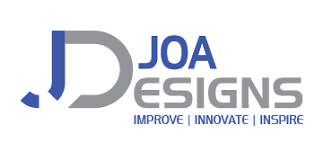In the ever-evolving world of product development, design precision and speed are critical. From consumer products and machinery to architectural layouts and medical devices, the ability to conceptualize, test, and refine designs efficiently can be the difference between innovation and irrelevance. For many designers, SOLIDWORKS is the gold standard—an industry-leading 3D CAD solution that turns ideas into reality.
However, to fully unlock the capabilities of SOLIDWORKS, designers must move beyond basic familiarity. They must master the platform—and that requires proper training. Whether you're a student, professional, or seasoned engineer, this guide will walk you through the essential stages of mastering SOLIDWORKS and why it’s a transformative investment in your design career.
what is 3d rendering
SOLIDWORKS is more than just 3D modeling software. It’s a comprehensive design environment that enables users to:
-
Create 2D and 3D designs
-
Perform simulations and stress tests
-
Generate detailed manufacturing drawings
-
Automate repetitive design tasks
-
Collaborate with teams across disciplines
Companies worldwide—from startups to global manufacturers—use SOLIDWORKS because it seamlessly integrates design, validation, and production workflows. Learning how to navigate and harness its features can significantly boost your productivity, creativity, and value as a designer.
Understanding the SOLIDWORKS Interface
Every training journey begins with familiarity. The SOLIDWORKS interface is intuitive but packed with features. Early-stage training should cover:
-
Command Manager and Feature Tree
-
Toolbars and shortcuts
-
View orientation tools
-
File management basics
-
Sketching fundamentals
Understanding the layout and customizability of your workspace is essential before diving into complex modeling tasks.
Building Strong Foundations: Sketching and Features
Solid models begin with 2D sketches. Mastering the sketch environment is crucial to success in SOLIDWORKS. Key skills include:
-
Creating precise geometric shapes
-
Using dimensions and constraints
-
Working with planes and axes
-
Leveraging relations for intelligent sketches
Once confident in sketching, you can move on to basic features like:
-
Extrude, Revolve, Sweep, Loft
-
Fillets, Chamfers, Shell
-
Hole Wizard and Draft features
These tools form the backbone of part modeling and are foundational in every designer’s skill set.
Advanced Part Modeling Techniques
To master SOLIDWORKS, you need to progress beyond basics and explore advanced part design techniques. This includes:
-
Multi-body part modeling
-
Complex lofted and swept shapes
-
Using configurations to create design variants
-
Mastering design tables for automation
-
Utilizing advanced surface modeling tools
Surface modeling is especially important for consumer products and automotive design, where aesthetics and ergonomic forms are paramount.
Enhancing Creativity with Confidence
Design is a creative process, but it’s often limited by technical barriers. Lack of software knowledge can cause hesitation or prevent designers from realizing their full vision. With solidworks training , these barriers disappear.
Once trained, designers gain the confidence to explore advanced tools like:
-
Surface modeling for complex, organic shapes.
-
Sheet metal design for enclosure and housing development.
-
Weldments and structural members for larger assemblies.
-
Photorealistic rendering with tools like SOLIDWORKS Visualize.
By mastering these features, designers can push creative boundaries while staying technically sound.







Connielob
The depth in this tune is exceptional. https://proisotrepl.com/product/domperidone/